Chiang
Advisor: Prof Dr. Ho-Ting Wu
2013.10.28
- Главная
- Разное
- Дизайн
- Бизнес и предпринимательство
- Аналитика
- Образование
- Развлечения
- Красота и здоровье
- Финансы
- Государство
- Путешествия
- Спорт
- Недвижимость
- Армия
- Графика
- Культурология
- Еда и кулинария
- Лингвистика
- Английский язык
- Астрономия
- Алгебра
- Биология
- География
- Детские презентации
- Информатика
- История
- Литература
- Маркетинг
- Математика
- Медицина
- Менеджмент
- Музыка
- МХК
- Немецкий язык
- ОБЖ
- Обществознание
- Окружающий мир
- Педагогика
- Русский язык
- Технология
- Физика
- Философия
- Химия
- Шаблоны, картинки для презентаций
- Экология
- Экономика
- Юриспруденция
The Design of power saving mechanisms in Ethernet Passive Optical Networks презентация
Содержание
- 1. The Design of power saving mechanisms in Ethernet Passive Optical Networks
- 2. Outline Introduction Optical-Fiber Network Passive Optical Network
- 3. Passive Optical Network (PON)
- 4. Passive Optical Network (PON) Optical line terminal
- 5. EPON REPORT and GATE message REPORT ONU
- 6. Interleaved Polling with Adaptive Cycle Time (IPACT)
- 8. The Design of Power Saving mechanisms in
- 9. Two energy-modes in ONU In L. Shi,
- 10. Early wake up Because of Toverhead ,
- 11. Lei Shi, Biswanath Mukherjee and Sang-Soo Lee’s research Didn’t consider downstream high priority data delay
- 12. Add doze mode in ONU
- 13. Add doze mode in ONU ONU Tx:
- 14. Add doze mode in ONU
- 15. Add doze mode in ONU : Weak
- 16. Improve three energy-modes in ONU Clockwise three energy-modes switching Counterclockwise three energy-modes switching
- 17. Clockwise three energy-modes switching
- 18. Clockwise three energy-modes switching Consider performance
- 19. Clockwise three energy-modes switching D -> A
- 20. Counterclockwise three energy-modes switching
- 21. Counterclockwise three energy-modes switching Consider power
- 22. Counterclockwise three energy-modes switching D ->
- 23. Upstream scheduling Using Limited service. Limited service
- 24. Downstream scheduling Although downstream slot and upstream
- 26. Simulation Result Clockwise three energy-modes switching
- 27. Dynamic downstream loading Upstream load:1 High = 99% Low = 1%
- 28. Dynamic downstream loading Upstream load:0.01 High = 50% low = 50%
- 29. Dynamic upstream loading Downstream load = 10 High = 99% low = 1%
- 30. Dynamic upstream loading Downstream load: 0.01 High = 50% low = 50%
- 31. Conclusion In this study, power saving mechanisms
- 32. Reference [1] Glen Kramer and Biswanath Mukherjee
- 33. Thanks for your listening
Слайд 2Outline
Introduction
Optical-Fiber Network
Passive Optical Network (PON)
EPON
Interleaved Polling with Adaptive Cycle Time (IPACT)
The
Design of Power Saving mechanisms in Ethernet Passive Optical Networks
Two energy-modes in ONU
Add doze mode in ONU
Improve three energy-modes in ONU
Clockwise three energy-modes switching
Counterclockwise three energy-modes switching
Upstream scheduling
Downstream scheduling
Simulation result
Conclusion
Two energy-modes in ONU
Add doze mode in ONU
Improve three energy-modes in ONU
Clockwise three energy-modes switching
Counterclockwise three energy-modes switching
Upstream scheduling
Downstream scheduling
Simulation result
Conclusion
Слайд 4Passive Optical Network (PON)
Optical line terminal (OLT)
Optical network units (ONUs) or
Optical network terminals (ONTs)
Use broadcast on Downstream
Use TDMA on Upstream
All ONUs register to OLT with LLID
Слайд 5EPON
REPORT and GATE message
REPORT
ONU to report its bandwidth requirements
OLT passes REPORT
to the DBA algorithm
GATE
After executing DBA algorithm, OLT transmits GATE down-stream to issue up to four transmission grants to ONU
Transmission start time
Transmission length
Timestamp (used by ONU for synchronization)
GATE
After executing DBA algorithm, OLT transmits GATE down-stream to issue up to four transmission grants to ONU
Transmission start time
Transmission length
Timestamp (used by ONU for synchronization)
Слайд 6Interleaved Polling with Adaptive Cycle Time (IPACT)
OLT maintain a Table with
Byte and RTT
First grant, G(1), is set to some arbitrary value
In polling cycle n, ONU measures its backlog in bytes at end of current upstream data transmission & piggybacks the reported queue size, Q(n), at end of G(n)
Q(n) used by OLT to determine next grant G(n+1) => adaptive cycle time & dynamic bandwidth allocation
If Q(n)=0, OLT issues zero-byte grant to let ONU report its backlog for next grant
First grant, G(1), is set to some arbitrary value
In polling cycle n, ONU measures its backlog in bytes at end of current upstream data transmission & piggybacks the reported queue size, Q(n), at end of G(n)
Q(n) used by OLT to determine next grant G(n+1) => adaptive cycle time & dynamic bandwidth allocation
If Q(n)=0, OLT issues zero-byte grant to let ONU report its backlog for next grant
Слайд 8The Design of Power Saving mechanisms in Ethernet Passive Optical Networks
Two
energy-modes in ONU
Add doze mode in ONU
Improve three energy-modes in ONU
Add doze mode in ONU
Improve three energy-modes in ONU
Слайд 9Two energy-modes in ONU
In L. Shi, B. Mukherjee, and S. S.
Lee, "Efficient PON with Sleep-Mode ONU: Progress, Challenges, and Solutions," refer two energy-modes including active and sleep modes. They separate high/low priority packet.
Слайд 11Lei Shi, Biswanath Mukherjee and Sang-Soo Lee’s research
Didn’t consider downstream high
priority data delay
Слайд 13Add doze mode in ONU
ONU Tx: off Rx:on
Downstream high priority
data won’t trigger sleep ONU wake.
Doze mode can make OLT send downstream data earlier.
Doze mode can make OLT send downstream data earlier.
Слайд 15Add doze mode in ONU : Weak point
Doze mode will implement
even no downstream data.
Low doze mode utilization
Active mode can’t turn to doze mode when no downstream data.
Low doze mode utilization
Active mode can’t turn to doze mode when no downstream data.
Слайд 16Improve three energy-modes in ONU
Clockwise three energy-modes switching
Counterclockwise three energy-modes switching
Слайд 18Clockwise three energy-modes switching
Consider performance
A -> S
[1] No upstream and downstream
data when OLT get ONUx’s REPORT.
A -> D
[2] No upstream data but has downstream data when OLT get ONUx’s REPORT.
S -> A
[3] Upstream high priority data coming
// Early wake up
S -> D
[4] Stay at sleep mode for consecutive Y clock
// variable Y protects downstream high priority data,Y is maximum of downstream high priority data delay.
A -> D
[2] No upstream data but has downstream data when OLT get ONUx’s REPORT.
S -> A
[3] Upstream high priority data coming
// Early wake up
S -> D
[4] Stay at sleep mode for consecutive Y clock
// variable Y protects downstream high priority data,Y is maximum of downstream high priority data delay.
Слайд 19Clockwise three energy-modes switching
D -> A
[5] Stay at doze mode for
consecutive Z clock || upstream high priority data coming
// Timer avoids upstream long low priority data delay
// variable Y、Z protects upstream low priority data , Y + Z is maximum upstream low priority data delay
p.s.
Active mode trigger: If report msg. request bandwidth = 0, means no upstream data.
// Timer avoids upstream long low priority data delay
// variable Y、Z protects upstream low priority data , Y + Z is maximum upstream low priority data delay
p.s.
Active mode trigger: If report msg. request bandwidth = 0, means no upstream data.
Слайд 21Counterclockwise
three energy-modes switching
Consider power saving
A -> S
[1] No upstream and
downstream data when OLT get ONUx’s REPORT.
A -> D
[2] No upstream data but has downstream data when OLT get ONUx’s REPORT
S -> A
[3] Stay at sleep mode for Y clock || upstream high priority data coming
// variable Y protects downstream high priority data,Y is maximum of downstream high priority data delay.
A -> D
[2] No upstream data but has downstream data when OLT get ONUx’s REPORT
S -> A
[3] Stay at sleep mode for Y clock || upstream high priority data coming
// variable Y protects downstream high priority data,Y is maximum of downstream high priority data delay.
Слайд 22Counterclockwise
three energy-modes switching
D -> S
[4] Stay at doze mode for
consecutive Z ms
// Force
// Timer avoids upstream long low priority data delay
// variable Y、Z protects upstream low priority data , Y + Z is maximum upstream low priority data delay
// Switch from Doze mode to Sleep mode is no delay so downstream high priority data increase Y clock delay, it’s maximum of downstream high priority data delay
D -> A
[5] upstream high priority data coming
// early wake up
p.s.
Active mode trigger: If report msg. request bandwidth = 0, means no upstream data.
// Force
// Timer avoids upstream long low priority data delay
// variable Y、Z protects upstream low priority data , Y + Z is maximum upstream low priority data delay
// Switch from Doze mode to Sleep mode is no delay so downstream high priority data increase Y clock delay, it’s maximum of downstream high priority data delay
D -> A
[5] upstream high priority data coming
// early wake up
p.s.
Active mode trigger: If report msg. request bandwidth = 0, means no upstream data.
Слайд 23Upstream scheduling
Using Limited service.
Limited service : OLT grants requested number of
bytes, but no more than MTW
OLT polling table increase ONU state.
OLT polling table increase ONU state.
Слайд 24Downstream scheduling
Although downstream slot and upstream slot are difference but there
have some relationship.
Different from general EPON, because ONU[x] in sleep mode, OLT can’t send downstream data. Downstream scheduling need to be considered.
ONUs’ doze mode maybe overlap so OLT need to select one of ONUs to send downstream data.
Different from general EPON, because ONU[x] in sleep mode, OLT can’t send downstream data. Downstream scheduling need to be considered.
ONUs’ doze mode maybe overlap so OLT need to select one of ONUs to send downstream data.
Слайд 26Simulation Result
Clockwise three energy-modes switching
ONU = 16
ONU queue size
10MByte
EPON Frame size = 64Bytes ~ 1518 Bytes
Channel capacity = 1Gbps
Max rate = 100 * 1000 * 1000 = 100Mbps
Guard time = 5 * 10-6
Y : After 20ms the state from sleep to doze
Z : After 30ms the state from doze to active
Simulation time 3s
EPON Frame size = 64Bytes ~ 1518 Bytes
Channel capacity = 1Gbps
Max rate = 100 * 1000 * 1000 = 100Mbps
Guard time = 5 * 10-6
Y : After 20ms the state from sleep to doze
Z : After 30ms the state from doze to active
Simulation time 3s
Слайд 31Conclusion
In this study, power saving mechanisms focus on reduce high priority
downstream data delay in power saving EPON.
In order to raise up doze mode utilization, we design new three energy-modes switching mechanisms to increase it.
All results discuss between power saving and performance, it’s trade off. Maybe we can improve traffic scheduling or switching mechanism for future.
In order to raise up doze mode utilization, we design new three energy-modes switching mechanisms to increase it.
All results discuss between power saving and performance, it’s trade off. Maybe we can improve traffic scheduling or switching mechanism for future.
Слайд 32Reference
[1] Glen Kramer and Biswanath Mukherjee “IPACT: A Dynamic Protocol for
an Ethernet PON (EPON),” IEEE Communications Magazine, February 2002.
[2] Lei Shi, Biswanath Mukherjee and Sang-Soo Lee “Energy-Efficient PON with Sleep-Mode ONU: Progress, Challenges, and Solutions,” IEEE Network March/April 2012 pp. 36-41.
[3] Jingjing Zhang and Nirwan Ansari “Toward Energy-Efficient 1G-EPON and 10G-EPON with Sleep-Aware MAC Control and Scheduling,” IEEE Communications Magazine February 2011 pp. s34-38.
[2] Lei Shi, Biswanath Mukherjee and Sang-Soo Lee “Energy-Efficient PON with Sleep-Mode ONU: Progress, Challenges, and Solutions,” IEEE Network March/April 2012 pp. 36-41.
[3] Jingjing Zhang and Nirwan Ansari “Toward Energy-Efficient 1G-EPON and 10G-EPON with Sleep-Aware MAC Control and Scheduling,” IEEE Communications Magazine February 2011 pp. s34-38.

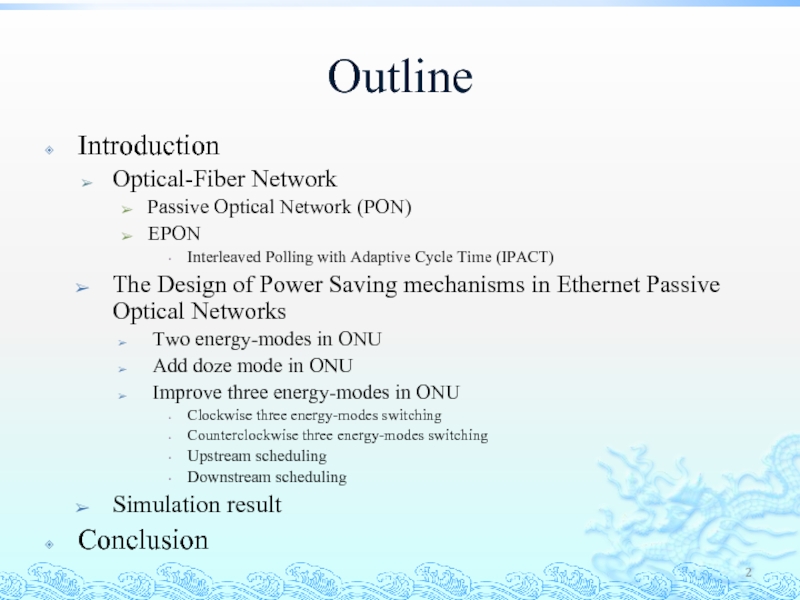


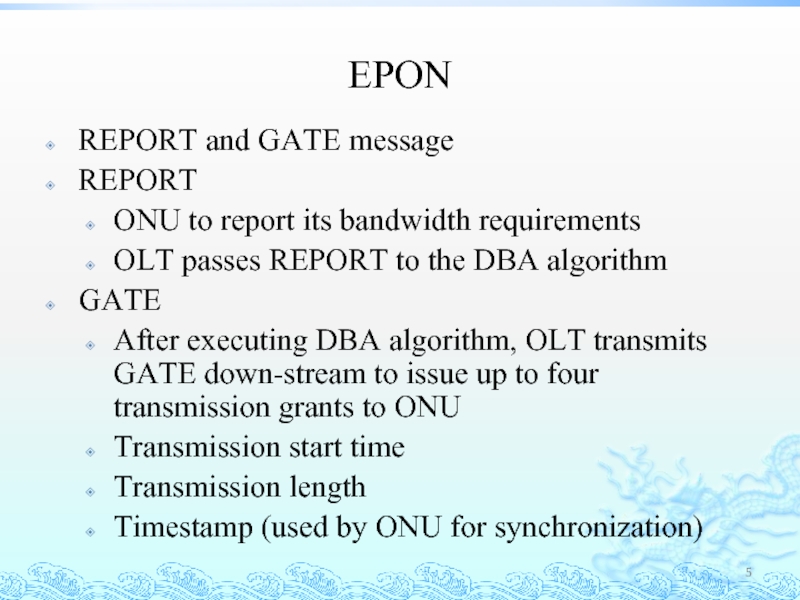

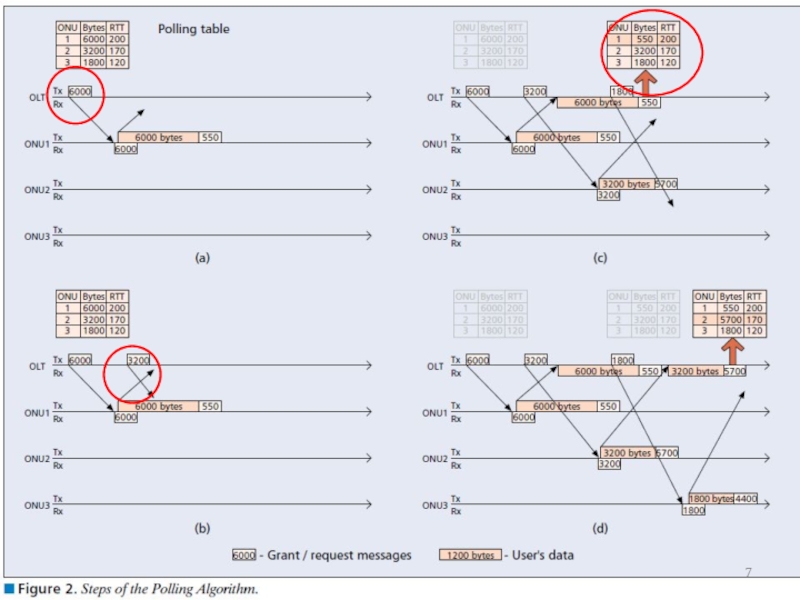


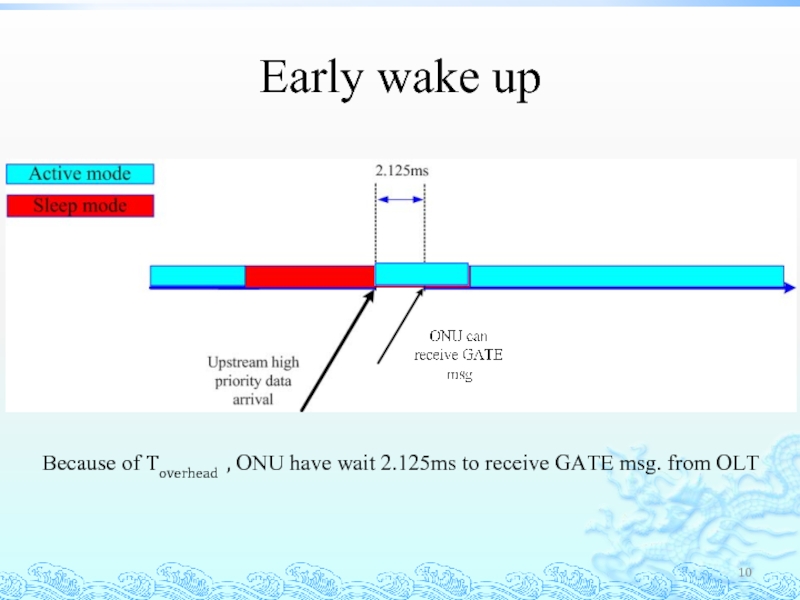

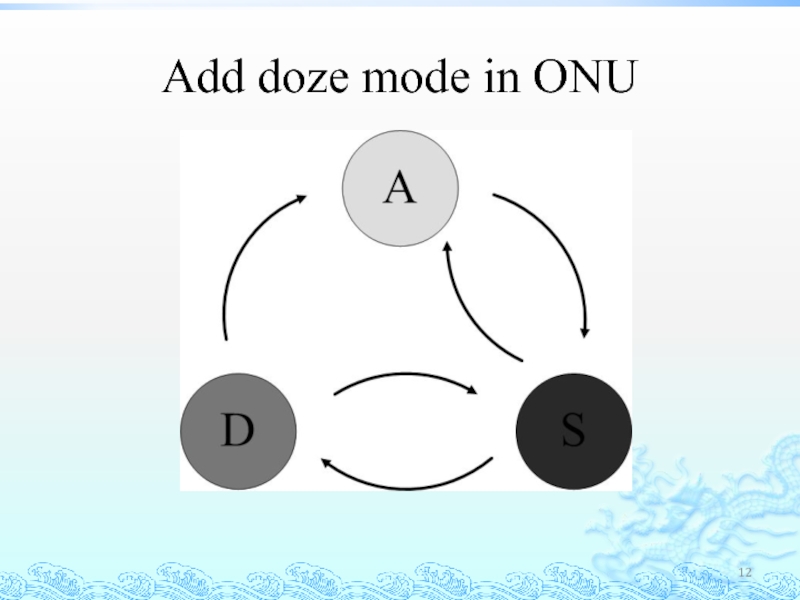
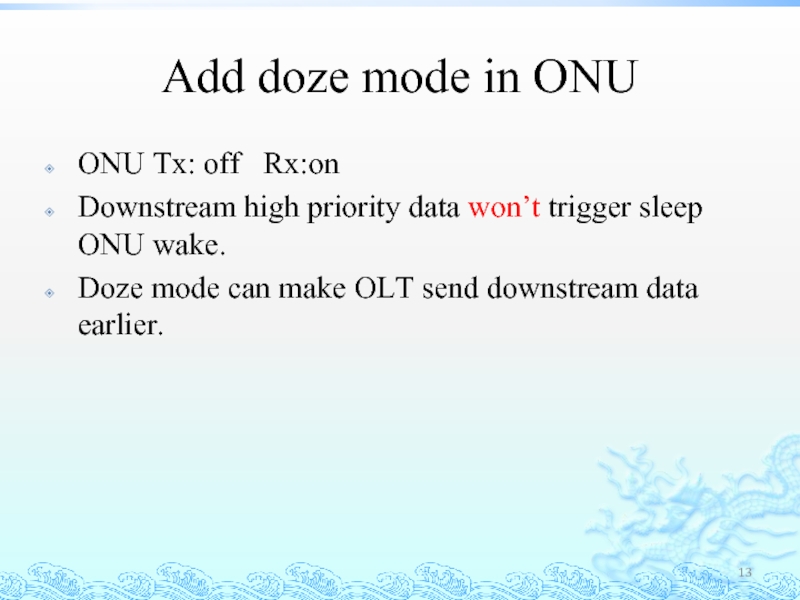


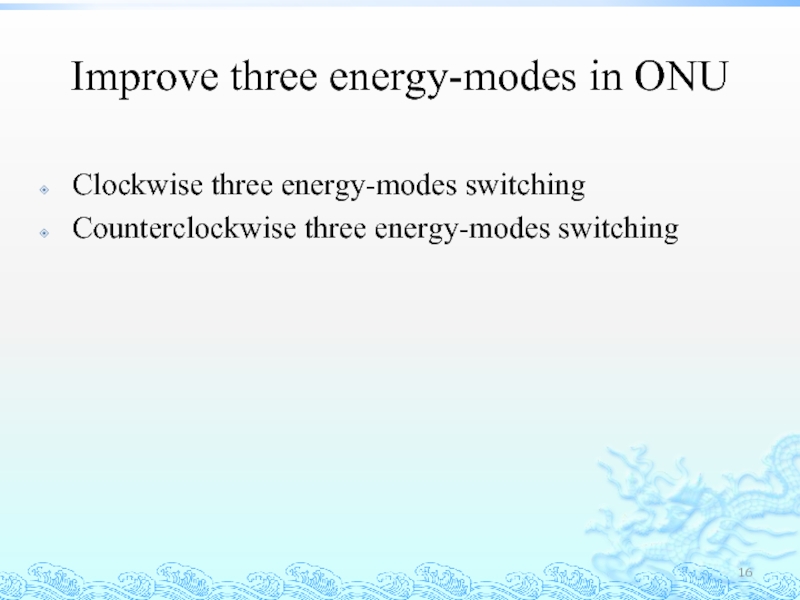

![Clockwise three energy-modes switchingConsider performanceA -> S[1] No upstream and downstream data when OLT get](/img/tmb/2/112682/022b8d2ed4feed5be659f66de8f21bf5-800x.jpg)
![Clockwise three energy-modes switchingD -> A[5] Stay at doze mode for consecutive Z clock ||](/img/tmb/2/112682/2b9ddb88df54feb4059069ef9340275a-800x.jpg)

![Counterclockwise three energy-modes switchingConsider power savingA -> S[1] No upstream and downstream data when OLT](/img/tmb/2/112682/61bbdac166af09527b7f386a5e70da65-800x.jpg)
![Counterclockwise three energy-modes switchingD -> S[4] Stay at doze mode for consecutive Z ms// Force//](/img/tmb/2/112682/d2c87c8a916a9c1b0823ca4611de28ee-800x.jpg)


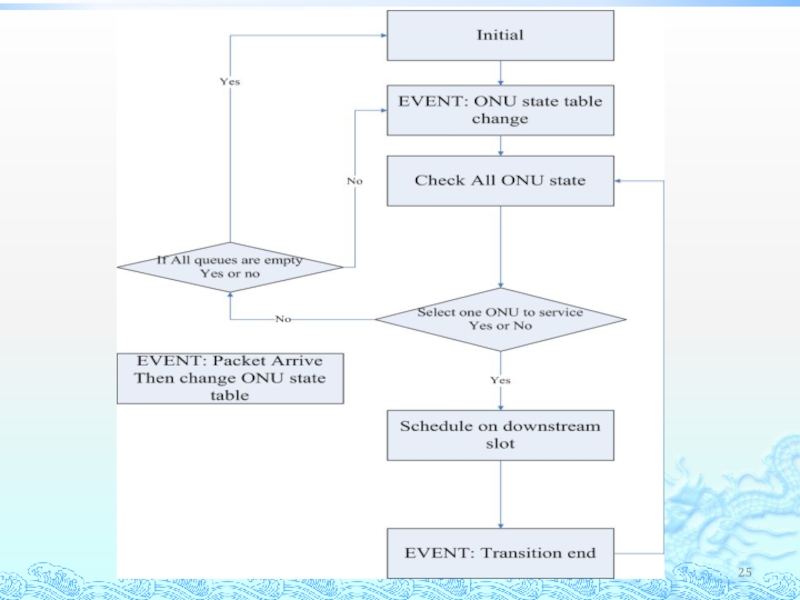

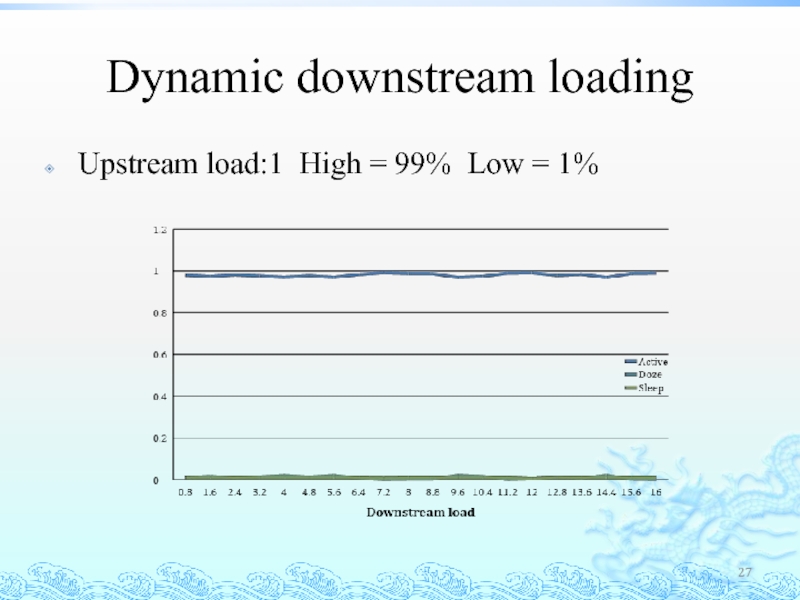

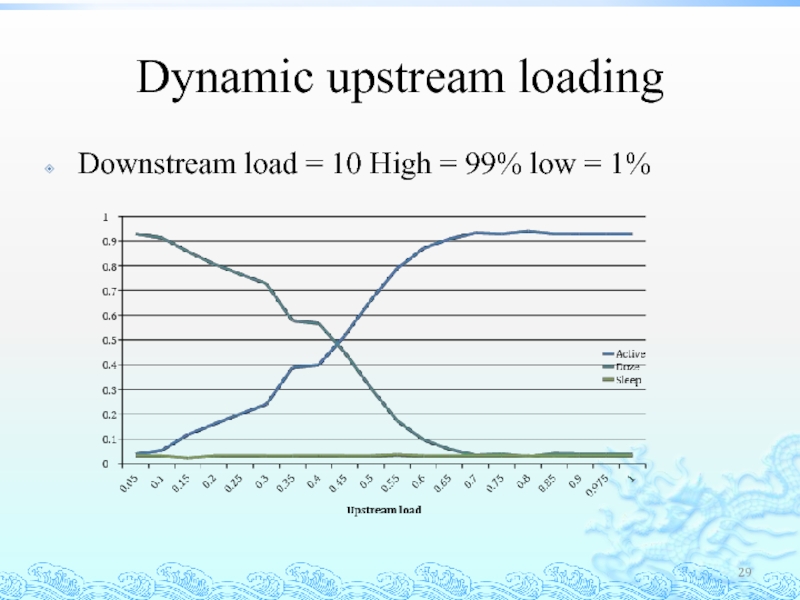
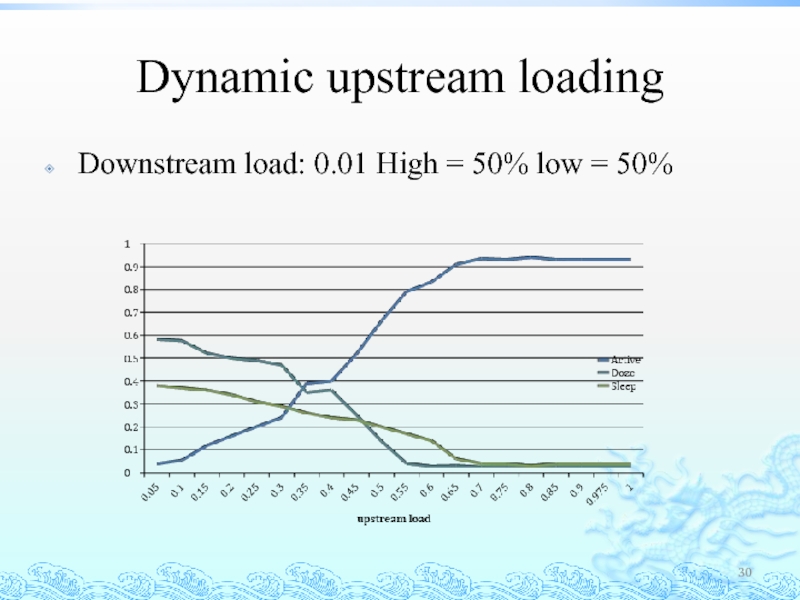

![Reference[1] Glen Kramer and Biswanath Mukherjee “IPACT: A Dynamic Protocol for an Ethernet PON (EPON),”](/img/tmb/2/112682/ebc861fb91a2bb92074ebceccd91d11a-800x.jpg)






